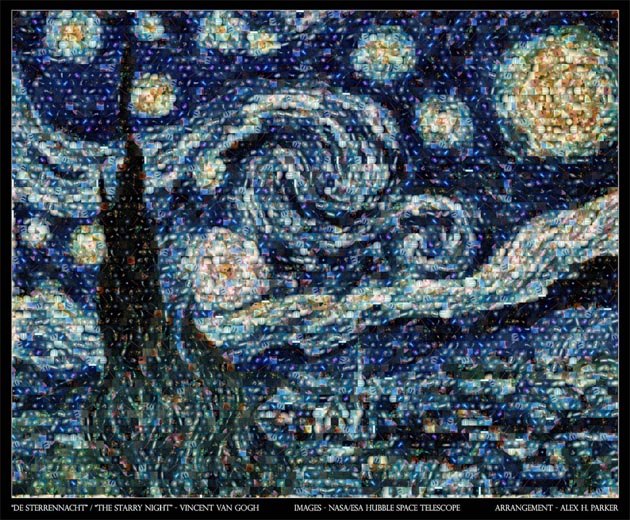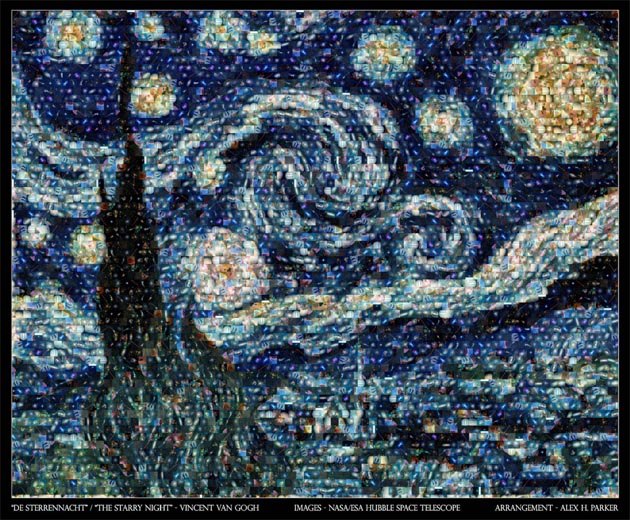

Does this image look familiar? It probably does since this is a recreation of one of the most famous paintings in the world, created by one of the most celebrate and skilled artists in the history of human-kind. This is Vincent Van Gogh’s famed “Starry Night” painting, but with a twist. That twist being that this is a recreation of the painting — stitched together using thousands of individual snapshots found in Hubble’s extensive archives.
Alex Parker —an astronomer from Harvard University — began working on this colorful mosaic while he was camping out beneath the starlight. When he pointed his telescope into the sky, he noticed that a number of cloud formations were obstructing his view of the cosmos. To pass the time, he started playing around with photo- mosaic software and decided to try his hand at arranging various images into an organized pattern. Inevitably, this was the result .
As Van Gogh once said:; “I often think that the night is more alive and more richly colored than the day.”
Supernova Sonata — Parker’s Other Work:
Prior to this rendition, Parker — along with Melissa Graham, who hails from the University of California Santa Barbara — famously used diverse data to formulate one thing. Only this time, instead of using Hubble images, they used data collected through the Canada France Hawaii Telescope (CFHT) Legacy Survey, which monitored four deep fields starting in April of 2003, ending in August of 2008, paying particular attention to type Ia supernovae. Novae of this type, which ignite following the collision of two extremely dense bodies, act as standard candles, allowing us to determine the precise distance of cosmological objects, yet they are interesting to map from a different perspective.
Parker and Graham essentially used the CFHT data to single out certain points that might be related to supernova explosions. They then gave each one its own distinct note, with its pitch determined by how quickly its luminosity varied in a small span of time. They also specified that the volume of each note be dictated by how distant the supernova was. As such, the note would be much more subtle with those found farther away and it would grow louder the closer in.
After determining the notes, they were played with different instruments. The more massive novae were played by stand-up bass, while a piano was tasked with playing notes representing much smaller galaxies. When all of them are put together,they play a supernova sonata:
See a much larger image here.